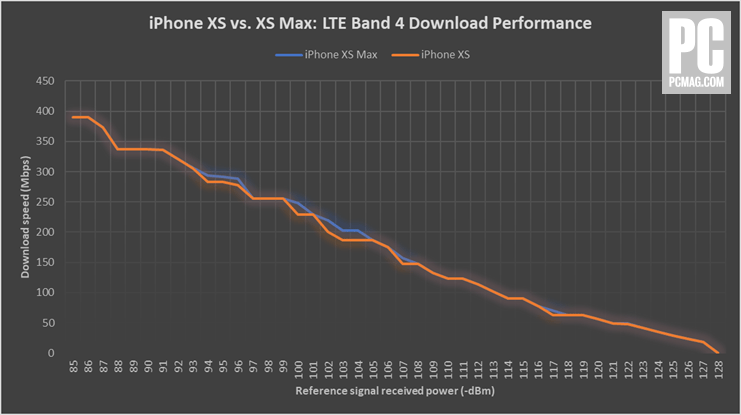Last week, we commented on the processor performance of the new iPhones (A12 Bionic) and the higher speed achieved by the new devices on both Wi-Fi and the mobile network (compared to the iPhone X) – thanks to the modem XMM 7560 from Intel, which supports MIMO 4 × 4 networks.
This technology is largely responsible for the LTE performance of the XS and XS Max iPhones over that of the X, but it is not the only one. To analyze the jump in the performance of this modem, the PCMag released the results of its speed tests, comparing the new flagships from Apple with iPhone X, Galaxy Note9 (from Samsung) and Pixel 2 (from Google).
It is worth remembering that the iPhone X, as well as the iPhones 7/7 Plus and 8/8 Plus, was in the middle of the transition from Qualcomm’s modems to those from Intel. Therefore, as they have been equipped with components from different manufacturers, they can present conflicting results.

In the first test, it is possible to verify the effect of the new MIMO 4 × 4 antennas. In good signal conditions, the download speed on the XS Max is twice that of the iPhone X – and even in not so positive conditions, it manages to maintain the highest performance. Comparing to Note9 and Pixel 2, the iPhone XS Max is a little slower, but the difference is getting smaller as the signal strength decreases.

Analyzing the signal at very low levels (below -120dBm), the iPhone XS Max competes even more with Android devices, which use Qualcomm’s X20 modem. Still, the Intel chip showed that it can’t take the stride when it needs to face the bad reception and has zeroed the download speed – which didn’t happen with the Note9 and the Pixel 2.

In the comparison between the two new flagships from Apple, they achieved practically the same result. THE PCMag you just noticed that the iPhone XS Max performs better at some specific signal levels; in practice, this is not enough to indicate a big difference between this device and the XS.
As we said, the modem is not solely responsible for the download speed of the new iPhones. The software is also a fundamental part of the performance of the device in general and this may be the reason that some users have complained about the signal strength in the new iPhones.
It is likely that the first firmware versions of the iPhones XS and XS Max may, in some places, be causing problems with signal reception. Therefore, as no hardware problems were found, this issue could be resolved with a future software update specific to these devices.
In this sense, the PCMag it also saw a noticeable drop in performance from iOS 11 to iOS 12 on the iPhone X with an Intel modem. With the new operating system, the device zeroed the download speed before the others gadgets running iOS 11.
via MacRumors
